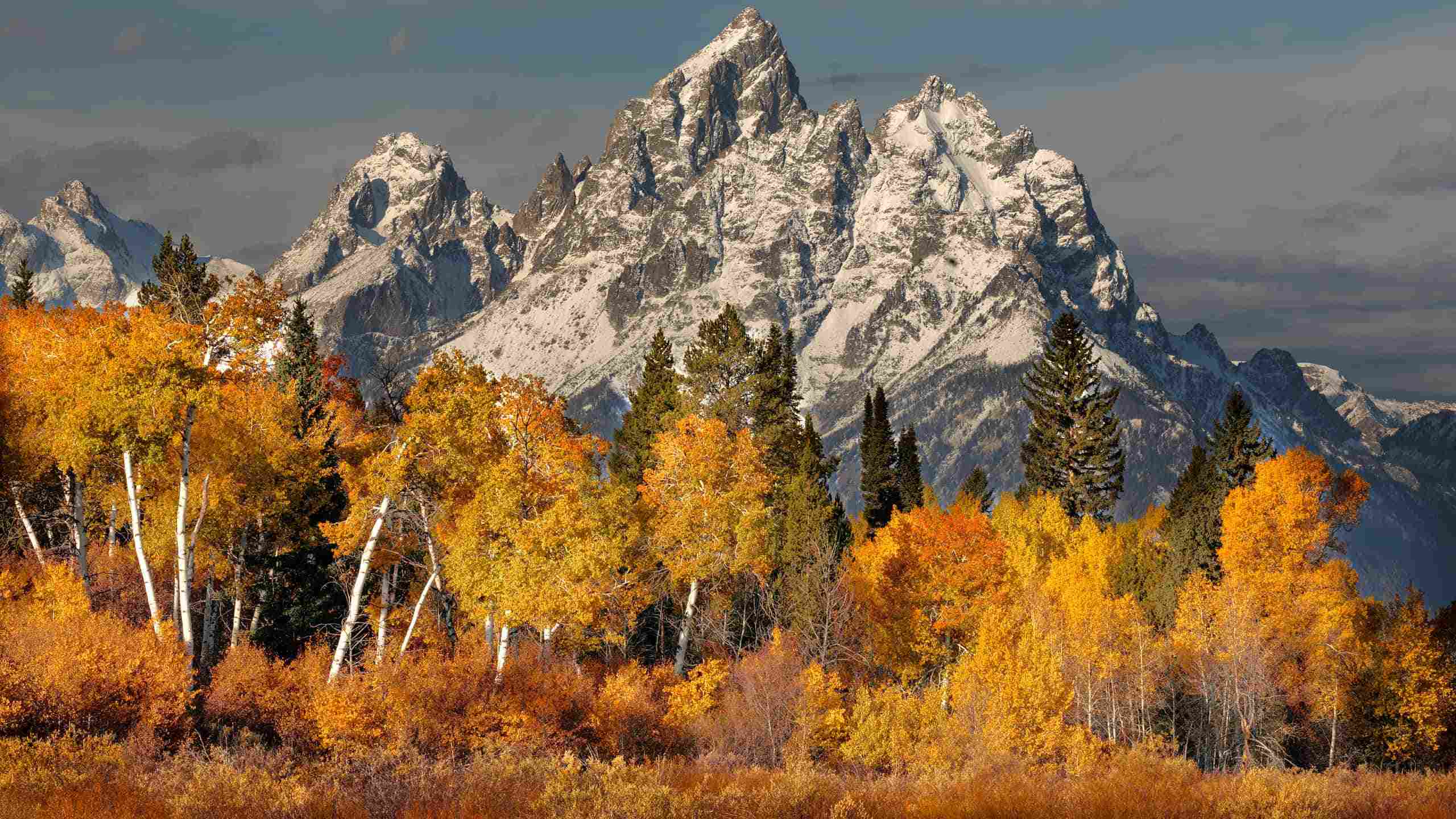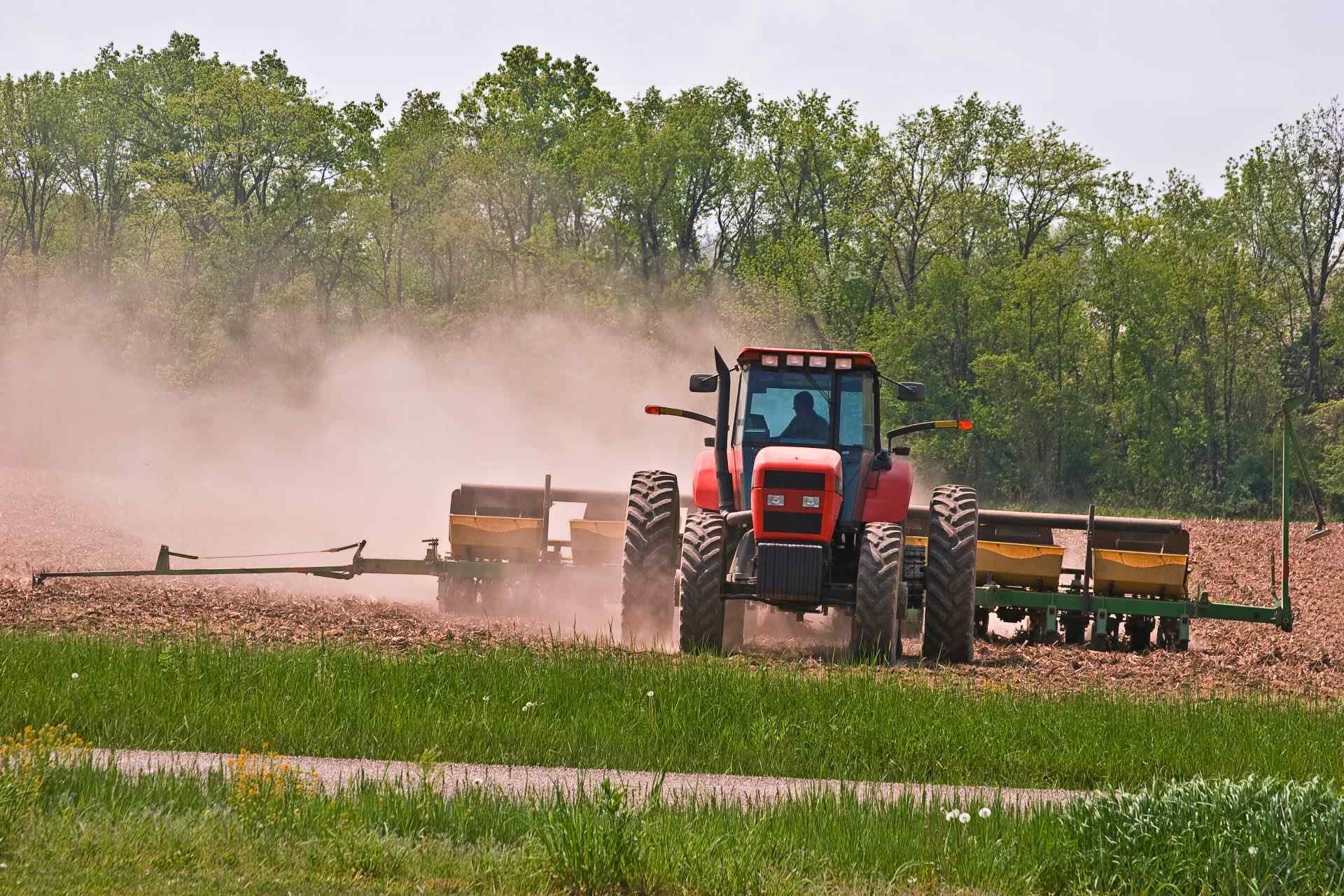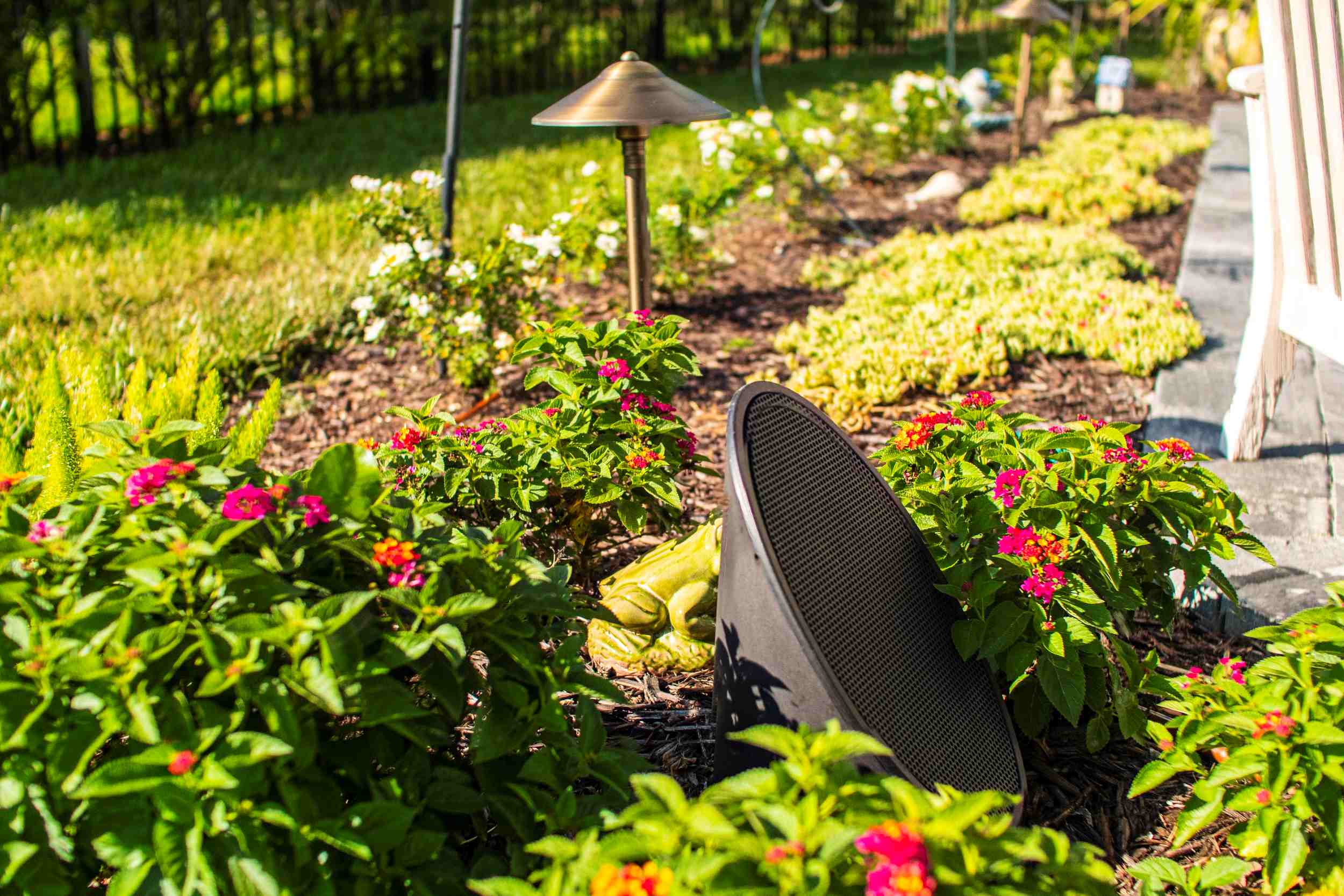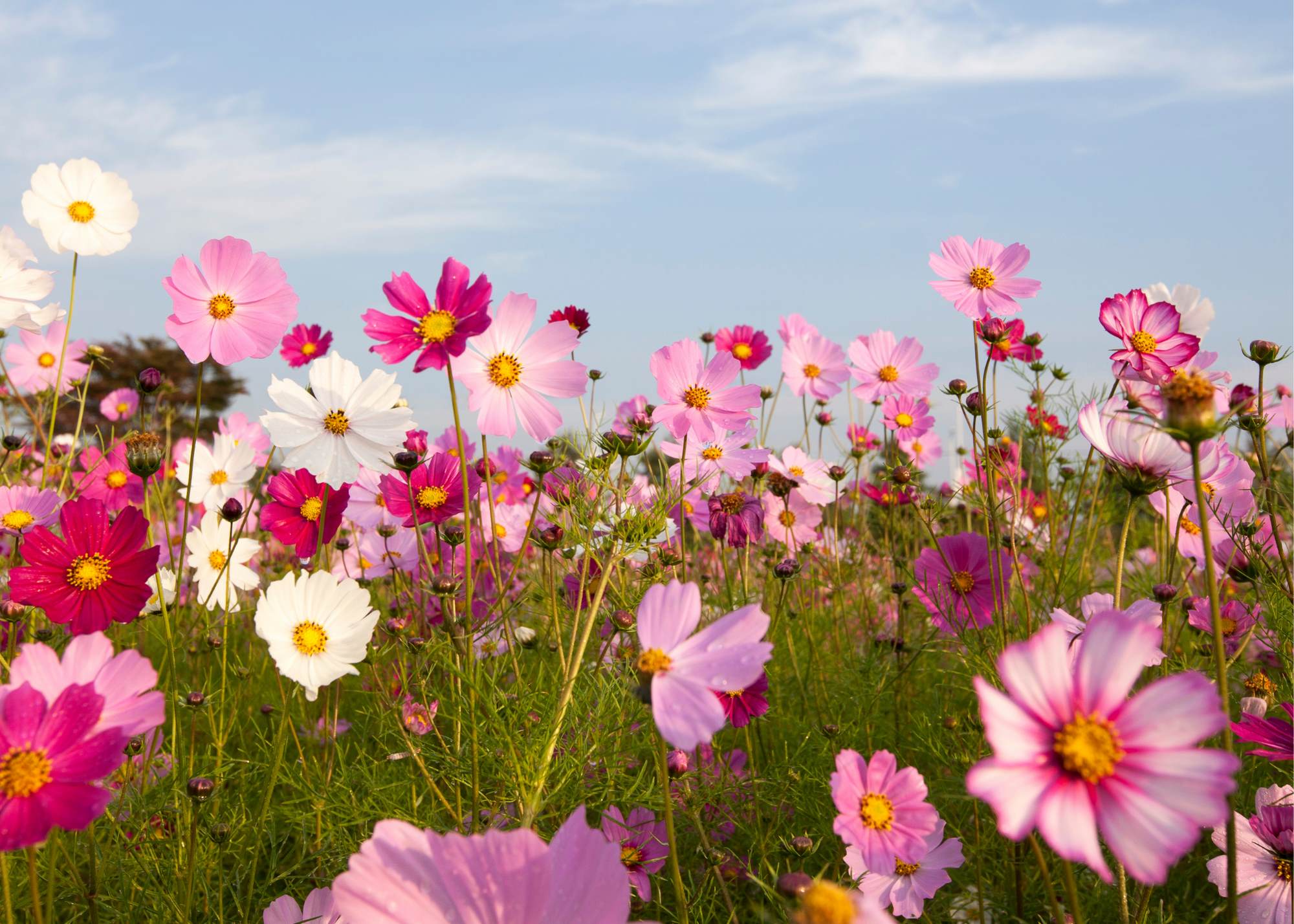Home>Gardening Basics>Understanding Soil>What Zone Is Arkansas For Planting


Understanding Soil
What Zone Is Arkansas For Planting
Modified: January 22, 2024
Understanding soil and planting in Arkansas? Discover what zone is ideal for planting and how to optimize your soil for successful gardening in this guide.
(Many of the links in this article redirect to a specific reviewed product. Your purchase of these products through affiliate links helps to generate commission for Chicagolandgardening.com, at no extra cost. Learn more)
Table of Contents
Introduction
Welcome to the fascinating world of soil! Understanding soil is essential for anyone who wants to have a successful garden, grow healthy crops, or simply appreciate the complex ecosystem beneath our feet. Soil is more than just dirt; it’s a dynamic and living system that plays a crucial role in providing nutrients, supporting plant growth, and regulating water and air movement.
In this article, we will explore the intricacies of soil, its composition, and its relationship with plants. We will dive into the concept of hardiness zones, which determine what types of plants can thrive in a specific region. Our focus will be on Arkansas, a state renowned for its diverse climates and fertile soil.
Understanding the hardiness zone of a particular region is crucial for successful gardening. By knowing your zone, you can choose plants that are well-adapted to your local conditions, ensuring higher chances of survival and productivity.
So, whether you’re a seasoned gardener or a curious plant enthusiast, let’s dig into the fascinating world of soil and uncover the secrets of Arkansas’s hardiness zone.
Understanding Hardiness Zones
Before we delve into Arkansas’s hardiness zone, it’s important to understand what hardiness zones are and why they matter in gardening. Hardiness zones are geographic areas that are defined based on the average minimum winter temperature. They help gardeners and farmers determine which plants are most likely to thrive in a specific region.
The United States Department of Agriculture (USDA) developed a zoning system known as the USDA Hardiness Zone Map. This map divides the country into 11 different zones, ranging from Zone 1 (coldest) to Zone 11 (warmest). Each zone is further divided into ‘a’ and ‘b’ subzones, creating a more detailed classification.
The hardiness zone concept is crucial because different plants have different temperature tolerances. Some plants can withstand freezing temperatures, while others thrive in warm, tropical climates. By selecting plants that are suited to your hardiness zone, you increase their chances of survival and successful growth.
Hardiness zones are determined by the average annual extreme minimum temperature over a 30-year period. While they provide a general guideline for plant selection, it’s important to note that other factors such as soil type, rainfall, humidity, and sunlight levels also play a role in a plant’s ability to thrive in a specific area.
Understanding your hardiness zone is the first step in creating a thriving garden. It helps you choose plants that are well-adapted to your local climate, saving you time, effort, and disappointment in the long run.
Now that we have a basic understanding of hardiness zones, let’s explore the specific hardiness zone of Arkansas, a state known for its diverse topography and varying climates.
Hardiness Zones in the United States
The United States is a vast country with a wide range of climates, from extremely cold regions in the north to tropical areas in the south. To help gardeners and plant enthusiasts navigate these diverse climates, the USDA created the Hardiness Zone Map.
The USDA Hardiness Zone Map divides the United States into 11 distinct zones based on average minimum winter temperatures. Each zone represents a 10-degree Fahrenheit difference from the adjacent zone. This map serves as a valuable tool for determining which plants are best suited for specific regions.
Let’s take a closer look at the different hardiness zones in the United States:
- Zone 1: This zone represents the coldest areas of the country, with average minimum winter temperatures ranging from -60 degrees Fahrenheit to -50 degrees Fahrenheit. Only a few hardy plant species can survive in this extreme cold.
- Zone 2: This zone is slightly warmer than Zone 1, with average minimum temperatures ranging from -50 degrees Fahrenheit to -40 degrees Fahrenheit. Cold-tolerant plants, such as conifers and some perennials, can thrive in this zone.
- Zone 3: With average minimum temperatures ranging from -40 degrees Fahrenheit to -30 degrees Fahrenheit, Zone 3 is suitable for a wider range of plants. Many fruit trees, ornamental shrubs, and cold-hardy vegetables can flourish in this zone.
- Zone 4: Zone 4 experiences minimum winter temperatures ranging from -30 degrees Fahrenheit to -20 degrees Fahrenheit. It is suitable for a variety of cold-hardy plants, including many popular garden flowers and vegetables.
- Zone 5: This zone has average minimum temperatures ranging from -20 degrees Fahrenheit to -10 degrees Fahrenheit. It supports a wide range of flowering plants, evergreen trees, and cold-tolerant vegetables.
- Zone 6: With average minimum temperatures ranging from -10 degrees Fahrenheit to 0 degrees Fahrenheit, Zone 6 offers a longer growing season and greater plant diversity. Many common garden plants, such as roses and perennials, thrive in this zone.
- Zone 7: Zone 7 experiences minimum temperatures ranging from 0 degrees Fahrenheit to 10 degrees Fahrenheit. It is suitable for a wide variety of plants, including many popular fruit trees and ornamental shrubs.
- Zone 8: This zone has average minimum temperatures ranging from 10 degrees Fahrenheit to 20 degrees Fahrenheit. It supports a diverse range of plants, including many subtropical species.
- Zone 9: With minimum winter temperatures ranging from 20 degrees Fahrenheit to 30 degrees Fahrenheit, Zone 9 allows for the cultivation of many warm-season plants, including citrus trees and tropical flowers.
- Zone 10: This zone has average minimum temperatures ranging from 30 degrees Fahrenheit to 40 degrees Fahrenheit. It is characterized by mild winters and is well-suited for growing a variety of tropical and subtropical plants.
- Zone 11: Zone 11 represents the warmest areas of the country, with minimum temperatures above 40 degrees Fahrenheit. This zone is ideal for growing tropical and heat-loving plants year-round.
Now that we have an overview of the hardiness zones in the United States, let’s zoom in on Arkansas’s specific hardiness zone.
Identifying Arkansas’s Hardiness Zone
Arkansas, with its diverse topography and varying climates, is home to several hardiness zones. These zones are determined by the average minimum winter temperature and help gardeners in the state choose the most suitable plants for their gardens.
According to the USDA Hardiness Zone Map, Arkansas is primarily divided into four different hardiness zones:
- Zone 6a: This zone covers the northern part of the state, including cities like Fayetteville and Mountain Home. It experiences average minimum winter temperatures between -10 degrees Fahrenheit to -5 degrees Fahrenheit.
- Zone 6b: The central part of the state, including places like Little Rock and Conway, falls under this zone. The average minimum winter temperatures range from -5 degrees Fahrenheit to 0 degrees Fahrenheit.
- Zone 7a: The southeastern part of Arkansas, including Pine Bluff and El Dorado, is classified as Zone 7a. It has average minimum winter temperatures ranging from 0 degrees Fahrenheit to 5 degrees Fahrenheit.
- Zone 7b: This zone encompasses the southernmost part of Arkansas, including Texarkana and Crossett. It experiences average minimum winter temperatures between 5 degrees Fahrenheit to 10 degrees Fahrenheit.
These hardiness zones indicate the range of temperatures that plants in Arkansas can tolerate during the winter months. By knowing your specific hardiness zone, you can select plants that are well-suited to the local climate, ensuring higher chances of survival and successful growth.
It’s important to note that while hardiness zones provide a general guideline for plant selection, other factors such as soil type, rainfall, humidity, and sunlight exposure also play a significant role in determining a plant’s ability to thrive.
Now that we have identified the different hardiness zones in Arkansas, it’s time to explore the factors that affect planting in this diverse state.
Factors Affecting Planting in Arkansas
When it comes to successful planting in Arkansas, there are several factors to consider. Understanding these factors can help ensure that your plants thrive and yield a bountiful harvest. Let’s explore some of the key factors that affect planting in Arkansas:
- Climate: The climate in Arkansas varies from subtropical in the south to temperate in the north. This diversity provides opportunities for growing a wide range of crops and plants. It’s important to select plants that are well-adapted to the specific climatic conditions of your hardiness zone in Arkansas.
- Soil Type: Arkansas has various soil types, including loamy, sandy, and clay soils. Each soil type has different drainage and nutrient-holding capacities, which can affect plant growth. Understanding your soil type and making appropriate amendments, such as adding organic matter or adjusting pH levels, can optimize soil health and plant growth.
- Water Availability: Adequate water is crucial for plant growth, and Arkansas experiences varying rainfall patterns throughout the year. It’s important to consider water availability and establish proper irrigation practices to ensure your plants receive the right amount of moisture.
- Sunlight Exposure: Different plants have different light requirements. Some thrive in full sun, while others prefer partial shade. Understanding the sunlight exposure in your garden area will help you select plants that will receive the optimal amount of sunlight for their growth and development.
- Planting Season: Arkansas’s planting season varies depending on the specific plant and the hardiness zone you are in. It’s important to know the recommended planting dates for different crops and plants to ensure they have enough time to mature before the first frost or extreme heat occur.
- Pest and Disease Management: Arkansas is home to various pests and diseases that can damage plants. It’s important to implement effective pest and disease management practices, such as crop rotation, companion planting, and organic pest control methods, to protect your plants and minimize damage.
By considering these factors and adapting your gardening practices accordingly, you can create a thriving garden in Arkansas. Whether you’re growing vegetables, flowers, or ornamental plants, understanding these factors will help you make informed decisions and increase your chances of gardening success.
Best Plants for Arkansas’s Hardiness Zone
Now that we have a better understanding of the hardiness zones in Arkansas and the factors that affect planting in the state, let’s explore some of the best plants that thrive in Arkansas’s specific hardiness zones.
Zone 6a, which covers the northern part of Arkansas, is known for its colder temperatures. Some plants that do well in this zone include:
- Japanese Maples (Acer palmatum): These beautiful ornamental trees add color and texture to the landscape, especially in the fall when their foliage turns vibrant shades of red and orange.
- Black-eyed Susans (Rudbeckia hirta): These cheerful flowers bloom throughout the summer, attracting pollinators and adding a pop of yellow to the garden.
- Cherry Tomatoes: These small, flavorful tomatoes are perfect for growing in containers and provide a bountiful harvest throughout the summer.
Zone 6b, covering the central part of Arkansas, has slightly milder winter temperatures. Some suitable plants for this zone include:
- Crepe Myrtles (Lagerstroemia): These flowering shrubs or small trees offer showy blooms in shades of pink, purple, and white during the summer months.
- Daylilies (Hemerocallis): These low-maintenance perennials produce stunning, trumpet-shaped flowers in a variety of colors, adding beauty to any garden.
- Peppers: Whether you prefer sweet or spicy, peppers thrive in the warm climate of Arkansas and are a great addition to any vegetable garden.
Zone 7a, found in the southeastern part of the state, experiences milder winter temperatures. Some plants that flourish in this zone include:
- Camellias (Camellia japonica): These evergreen shrubs produce elegant, rose-like flowers in shades of pink, red, and white, adding beauty to the garden during the winter and early spring.
- Azaleas (Rhododendron): These vibrant flowering shrubs brighten up the landscape with their showy blooms and come in a range of colors.
- Okra: This warm-season vegetable thrives in the hot summers of Arkansas and produces pods that are perfect for frying, grilling, or adding to stews.
Zone 7b, covering the southernmost part of Arkansas, experiences even milder winter temperatures. Some suitable plants for this zone include:
- Bougainvillea: These tropical vining plants are known for their colorful bracts, which add a burst of vibrant hues to the landscape.
- Hibiscus: These stunning flowering shrubs produce large, showy blooms in various colors and are a favorite of butterflies and hummingbirds.
- Watermelon: This juicy and refreshing fruit thrives in the hot and humid climate of southern Arkansas and is a popular addition to summer gardens.
These are just a few examples of plants that thrive in their respective hardiness zones in Arkansas. Remember to consider other factors such as soil type, water availability, and sunlight exposure when selecting plants for your specific location within the state.
With a wide variety of plants that can thrive in Arkansas’s diverse hardiness zones, you can create a beautiful and productive garden that suits the local climate and brings you joy throughout the year.
Conclusion
Understanding soil and the hardiness zones in Arkansas is essential for anyone looking to create a thriving garden or grow healthy crops. By knowing your hardiness zone and considering factors like climate, soil type, water availability, and sunlight exposure, you can select the best plants suited for your specific region.
Arkansas, with its diverse topography and varying climates, is home to several hardiness zones. From Zone 6a in the north to Zone 7b in the south, each zone offers unique planting opportunities and challenges. By choosing plants that are well-adapted to your specific hardiness zone, you increase the chances of successful growth and harvest.
Whether you’re a seasoned gardener or just starting out, it’s essential to consider the factors that affect planting in Arkansas. By understanding the climate, soil type, water availability, sunlight exposure, and recommended planting seasons, you can make informed decisions and create a thriving garden.
Remember to utilize the rich diversity of plants that thrive in Arkansas’s hardiness zones. From ornamental trees like Japanese Maples and Crepe Myrtles to flowering shrubs like Camellias and Azaleas, and from vegetables like peppers and okra to fruits like watermelon, there is something for every gardener’s taste.
So, roll up your sleeves, dig into the fascinating world of soil, and embrace the joys and challenges of planting in Arkansas. With proper understanding and care, you can create a beautiful and productive garden that brings you joy and satisfaction throughout the year.










